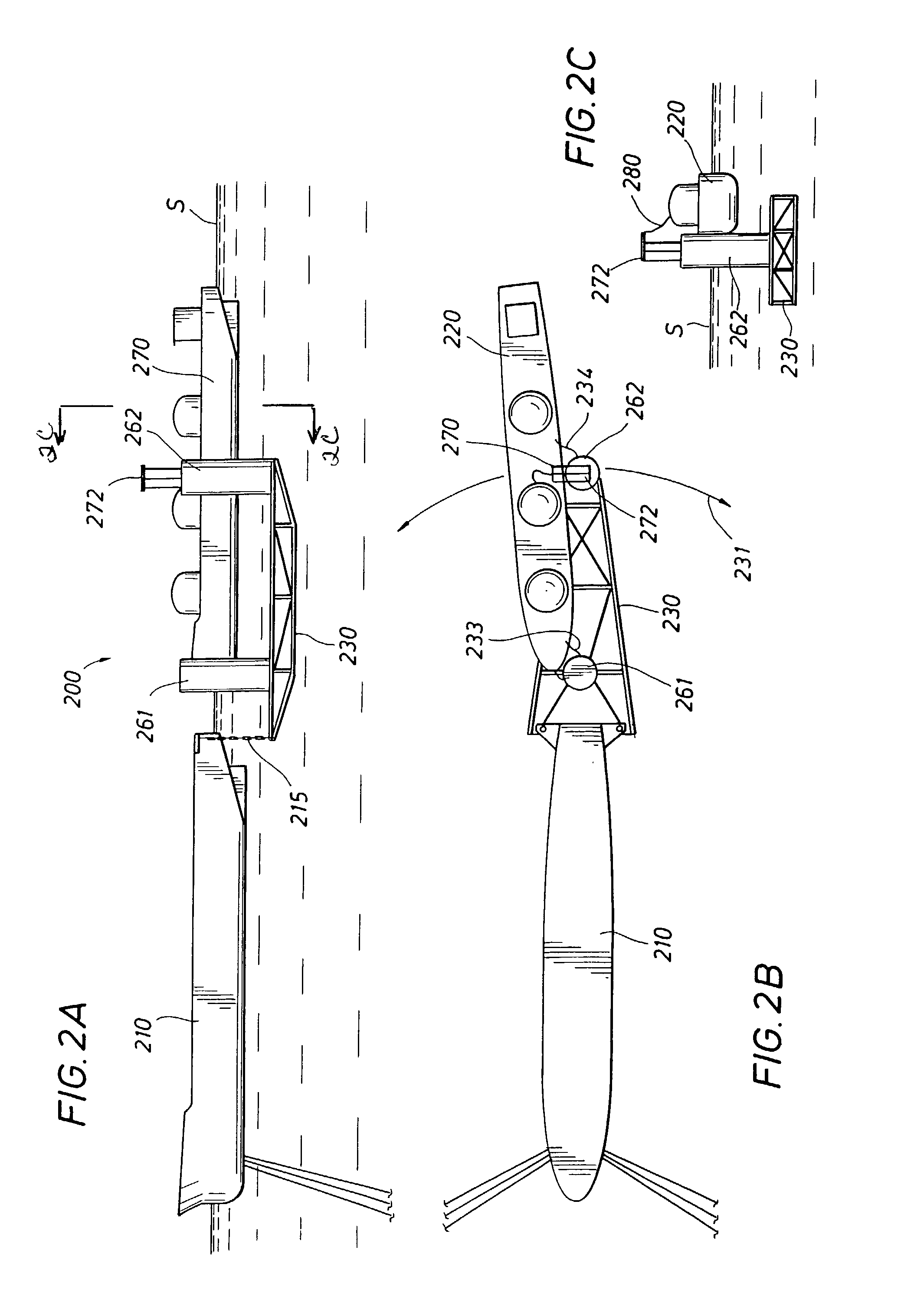Offloading arrangements for speard moored FPSOs
a technology of fpsos and mooring, which is applied in the direction of passenger handling apparatus, transportation and packaging, vessel construction, etc., can solve the problems of inability to weathervane, the magnitude of potential damage, and the cost of maintaining the shuttle tanker within the safe unloading zone, so as to reduce the risk of collision
- Summary
- Abstract
- Description
- Claims
- Application Information
AI Technical Summary
Benefits of technology
Problems solved by technology
Method used
Image
Examples
Embodiment Construction
[0043] As illustrated in FIGS. 1A, 1B, a mooring arrangement 100 is illustrated where a submerged yoke 30 is hung from outriggers 13 located at the unloading end 11 of an FPSO, in a pendular fashion, and is supported at its opposite end by a fendered SALM 26. A shuttle tanker 20 is moored to the SALM 26 by a mooring hawser 28 and loaded in the normal fashion through a floating hose 27 between the SALM 26 and a loading manifold of the shuttle tanker 20. The FPSO's aft mooring legs 14 are keel mounted to avoid interference with the yoke 30 during partial weathervaning.
[0044] The submerged yoke 30 is preferably supported at the aft end of the FPSO by two vertical links 15 such as chains or other tension members. Links 15 are connected to outrigger porches 13 and allow the yoke 30 to twist about the end of the FPSO such that fendered SALM 26 can rotate in an arc A1 during weathervaning conditions operating on shuttle tanker 20. The shuttle tanker 20, connected to SALM 26 by the mooring ...
PUM
 Login to View More
Login to View More Abstract
Description
Claims
Application Information
 Login to View More
Login to View More - R&D
- Intellectual Property
- Life Sciences
- Materials
- Tech Scout
- Unparalleled Data Quality
- Higher Quality Content
- 60% Fewer Hallucinations
Browse by: Latest US Patents, China's latest patents, Technical Efficacy Thesaurus, Application Domain, Technology Topic, Popular Technical Reports.
© 2025 PatSnap. All rights reserved.Legal|Privacy policy|Modern Slavery Act Transparency Statement|Sitemap|About US| Contact US: help@patsnap.com



